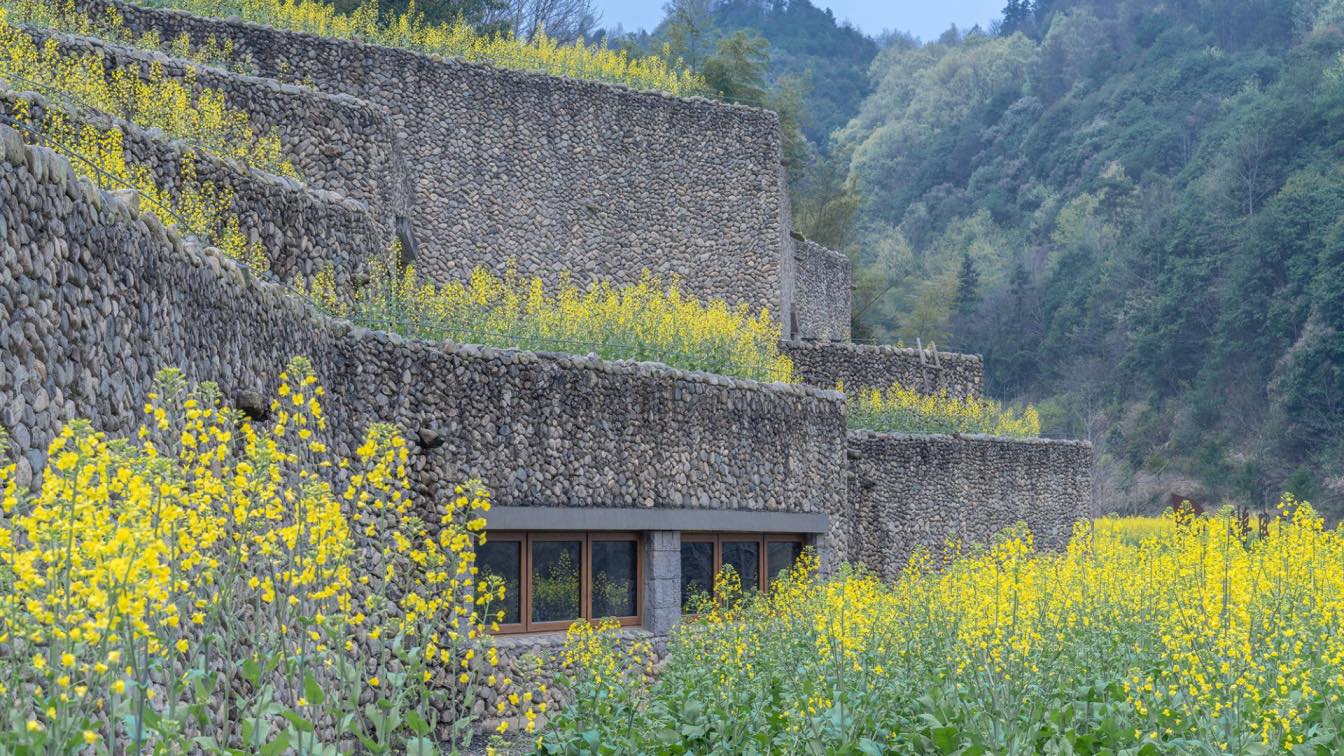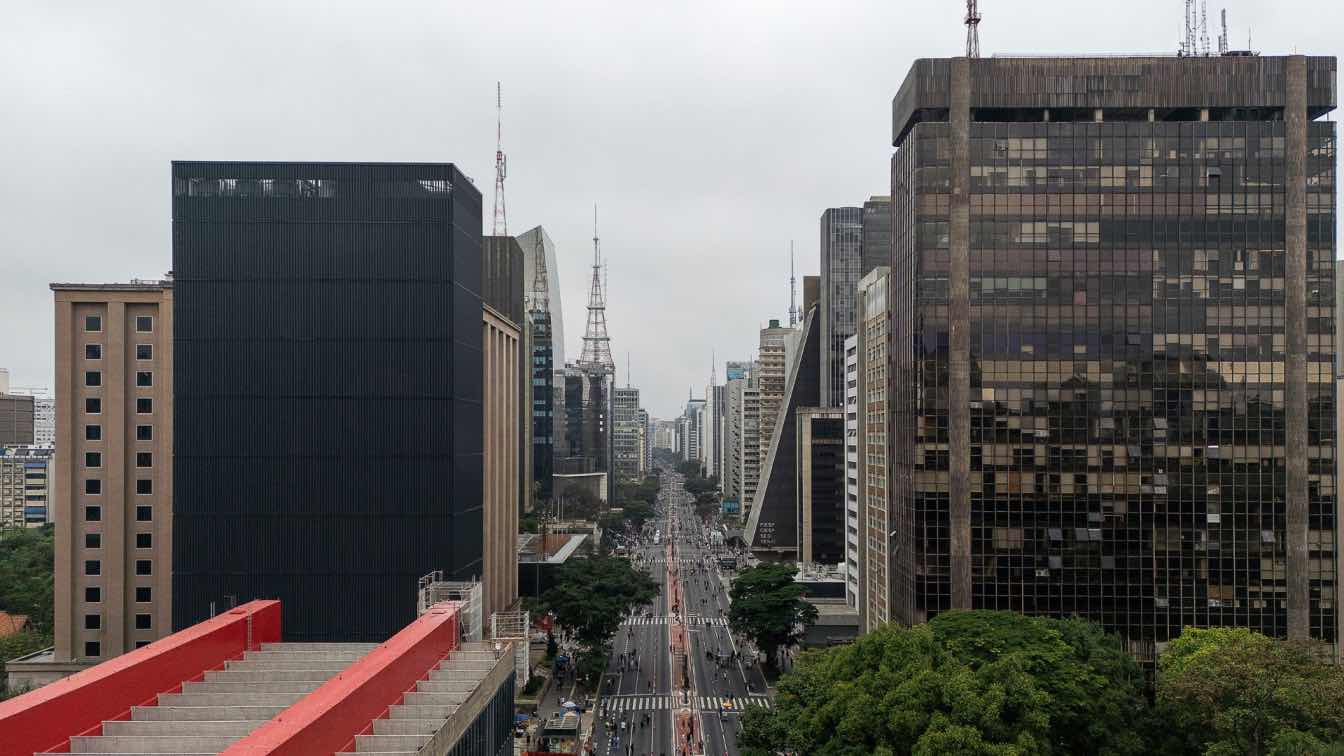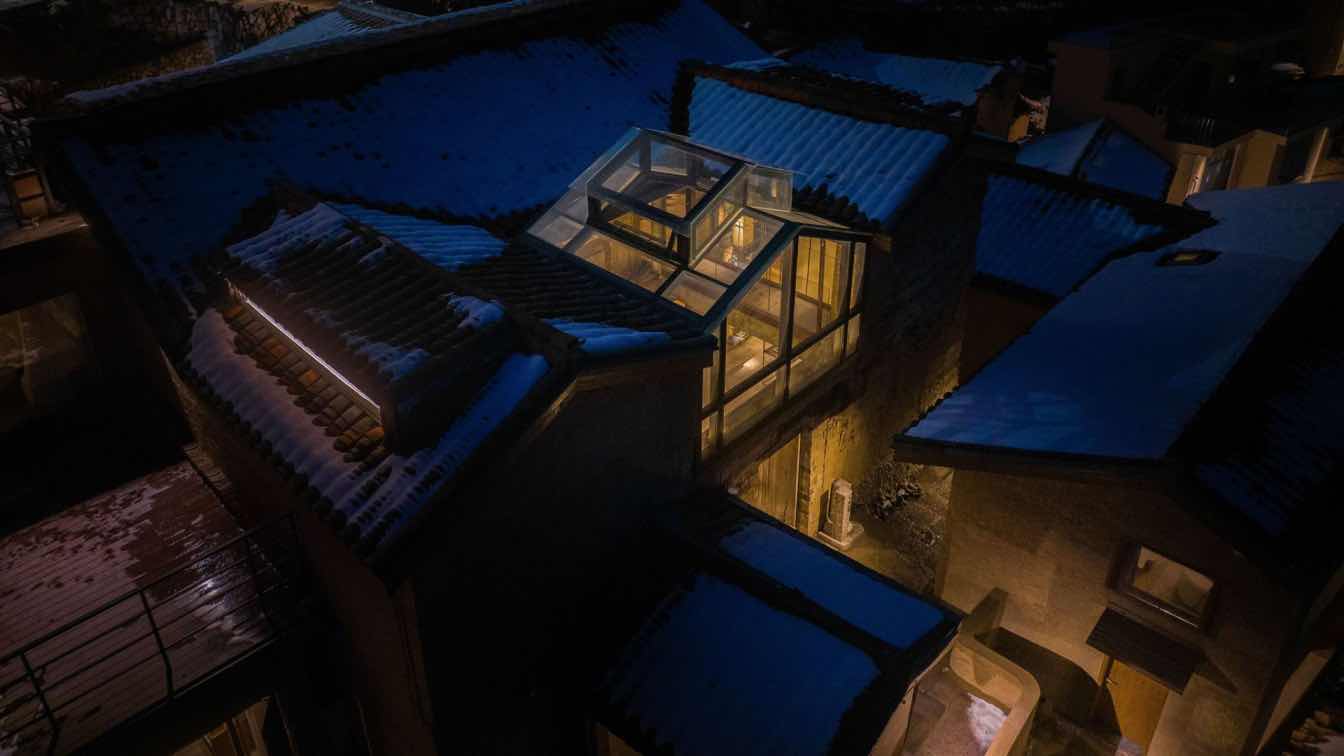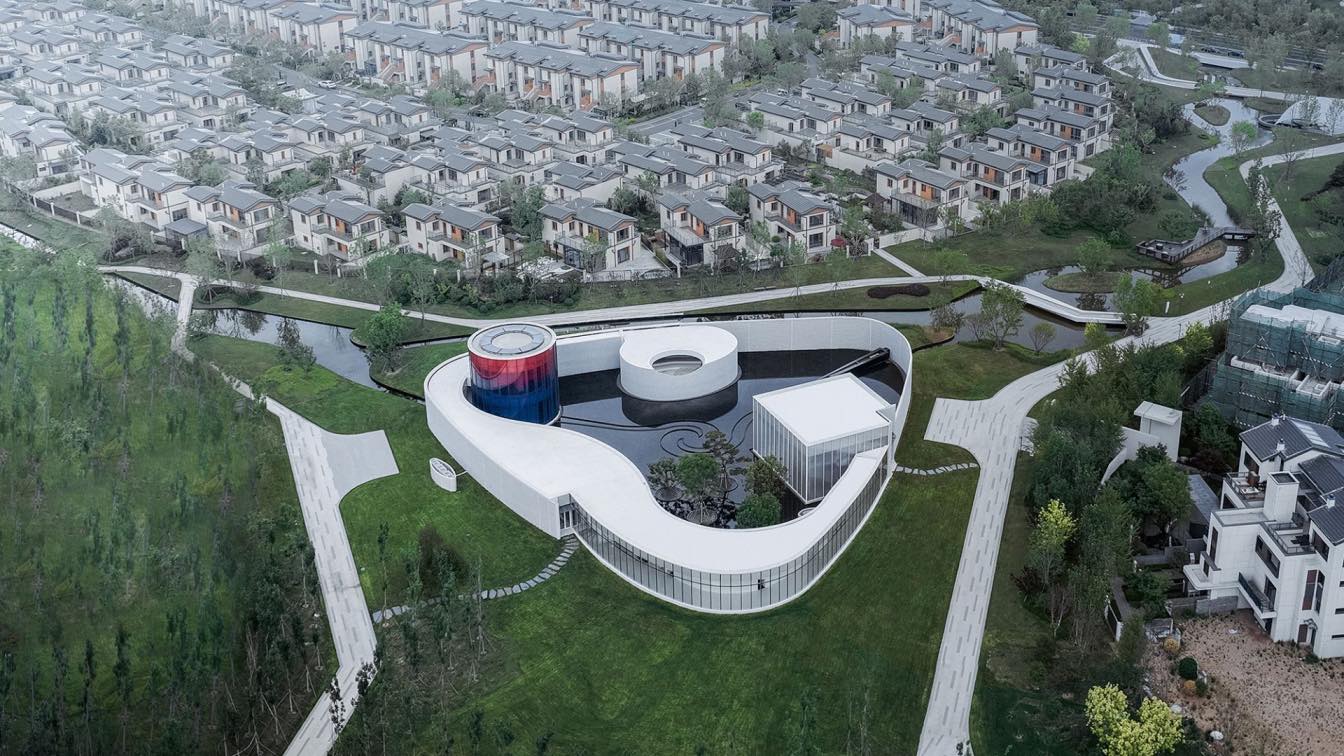Background
The Architectural Design & Research Institute of Zhejiang University (UAD): Located in Nanshangang, Sangzhou Town, Ninghai County, Zhejiang, the project is positioned as a small cultural and tourism building that integrates a tourist center and spaces for displaying and experiencing the local history and culture.
The site is far away from the hustle and bustle of city life, with only one country road connecting several villages nearby. And there are local villagers working in fields around the site every now and then. Due to great height discrepancy, the plot features recessed platforms ascending from north to south, with a broad view on the north side. The site faces terraced fields on the east and west sides, and embrace the view of rolling mountains in the distance.
Nature
Respecting nature and blending into environment is the key design principle of the project. The project sits on beautiful terraced fields, close to mountains and water. The exterior spaces are created in a way of adapting to the site's terrain and natural setting. The architectural silhouette conforms to the plot's terraced landform, to blend into the environment. And the rooftops are planted with crops, to harmonize with the terraced fields nearby.
The interior spaces are created in accordance with the external form. Irregular walls and staggered roofs make every space unique and full of variations, like the diverse paths in the countryside. Natural light penetrates windows and skylights, and falls onto the walls and the floor, generating varying scenes in the space.

Construction
In the construction process, local materials were selected and brought into full play. Local experienced stonemasons were employed to construct the building by the use of local natural stones, to present the most original features of terraced fields.
Based on simple techniques and methods, the whole building harmonizes with surrounding terraced fields and mountains both in texture and in form. Details such as stone window frames and drip edges were meticulously made by craftsmen.
Materials selected for interior space reveal the authenticity of textures. The fair-faced concrete ceiling, the white diatom mud wall, and the wood-colored doors and windows, embody the primitive aesthetics of the countryside architecture.
Recognition
Sited at a corner of the valley, the rustic building "dissolves" into the mountain and river landscape that has been existed for centuries.
Environment is a unity that integrates natural and artificial spaces with different functions. As a substantial building in such a context, the project embodies not only style and appearance, but also expresses long-standing social, cultural and technical systems and the recognition of nature and local features.
Epilogue
The architecture features a volume that dissolves into the environment and delicate spaces crafted by appropriate techniques. The building dialogues with the surroundings such as terraced fields, creek, bridge and paths. Walking through the bridge above the stream, and approaching the building nestling under mountains, visitors will continuously encounter unexpected surprises along the way.
For this project, the designers created a small cultural destination that reflects local and site features in a low-profile gesture and a vernacular form.

























About
Founded in 1953, The Architectural Design & Research Institute of Zhejiang University Co., Ltd. grew out of Architectural Design Studio of Zhejiang University. It is one of the earliest Class-A design institutes established among national key universities.
Guided by the principle of "Harmonious Environment, Global Vision, Design integrating Teaching & Research & Creation, Aiming High & Professional & Powerful", implementing the development strategy of "High-grade Culture, Long & Wide Vision, High-efficiency Management, High-caliber Personnel, Highly professional Technique and High-quality Works", and applying the academic theory of "Balance Architecture" as design guidelines, UAD has been persevering in the creation of innovative, high-end projects. A large number of outstanding projects in various disciplines have been realized. UAD has been credited by over 1500 awards of various types over the years, including excellent design awards at national, ministerial and provincial level, apart from international design awards, Premium-quality project awards, Science & technology achievement awards and so on.
UAD has always been adhering to the enterprise spirit of "Truth seeking & Innovation" and following "Striving for Excellence & Advocating Perfection" as quality guideline. UAD will continue to provide premium design and services for all sectors of the community, and stick to the idea of "Sharing Value through Design".





